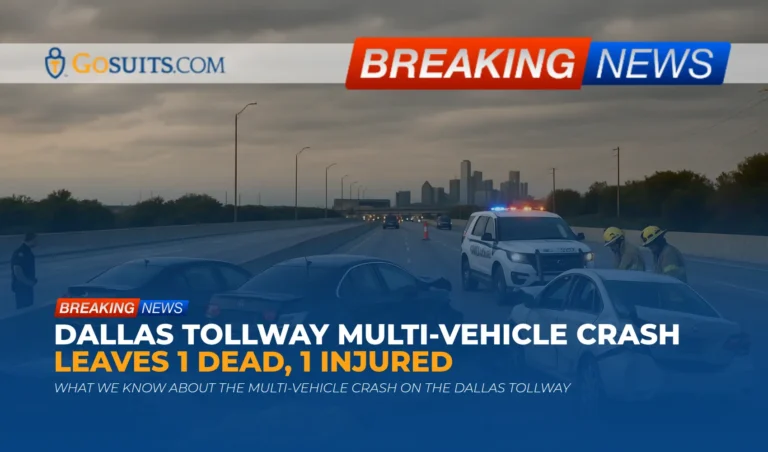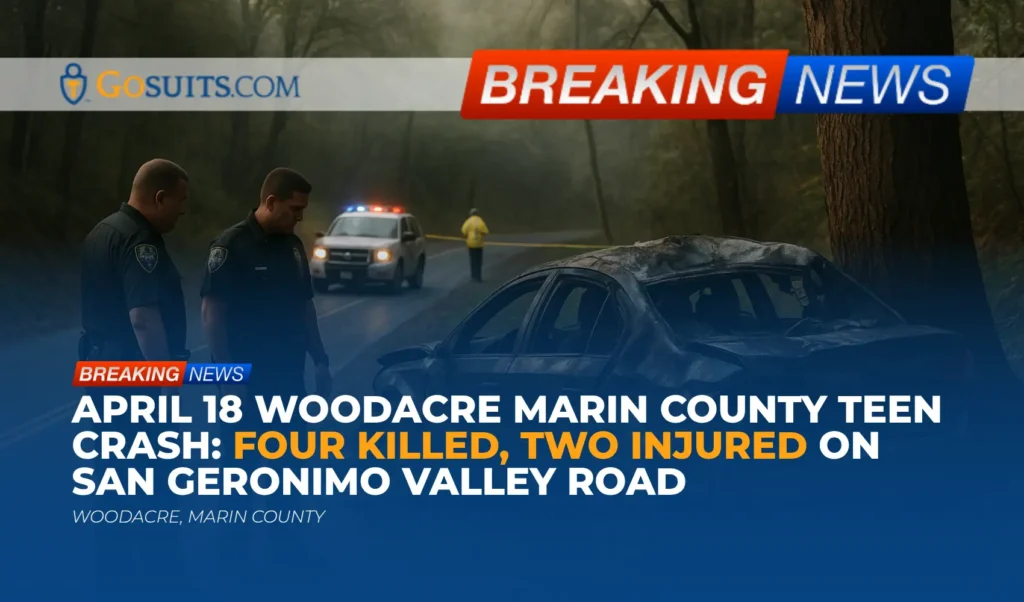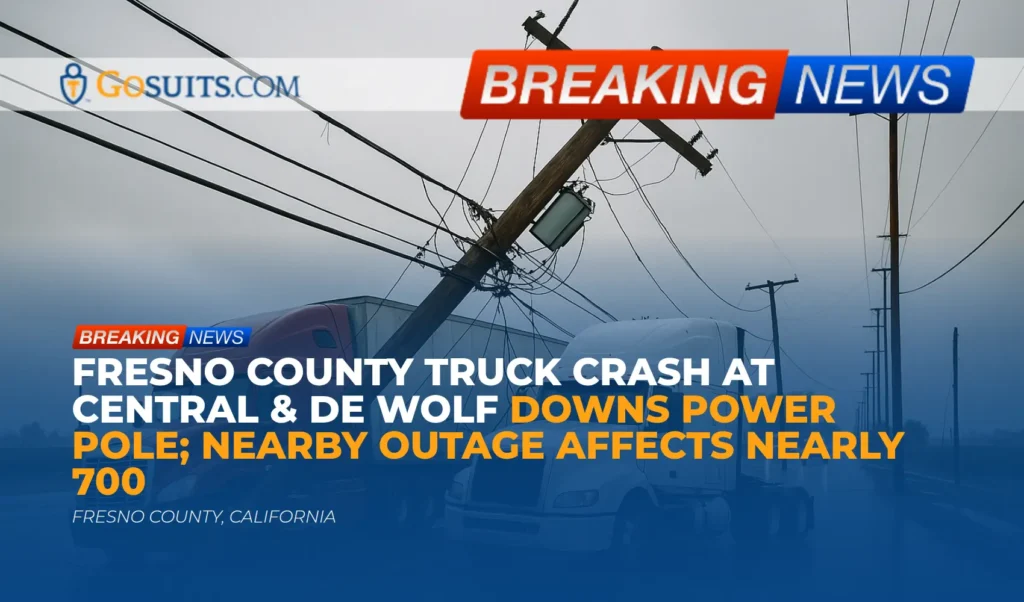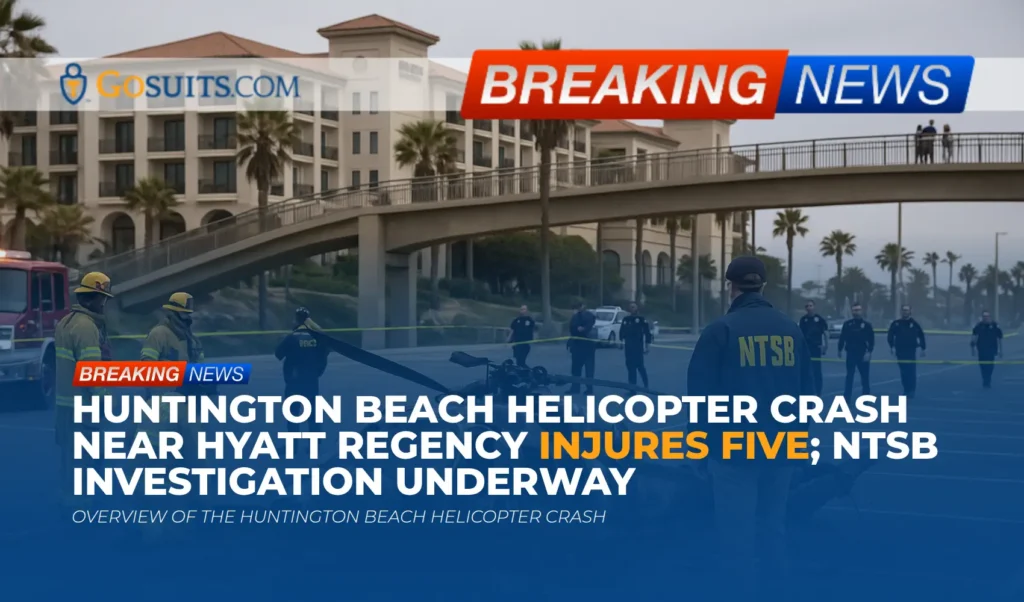- What We Know About the Multi-Vehicle Crash on the Dallas Tollway
- Why Multi-Vehicle Crashes on High-Speed Toll Roads Are So Dangerous
- How Families Can Obtain Official Records and Information in Texas
- Civil Law Context After a Serious Texas Crash
- Insurance Issues That Often Arise After Tollway Collisions
- Preserving Evidence After a Serious Crash
- Grief, Support, and Financial Assistance Resources
- Commentary from Gosuits Dallas, Texas Personal Injury Attorney
- Act Now: Time-Sensitive Steps That Protect Rights
What We Know About the Multi-Vehicle Crash on the Dallas Tollway
A multi-vehicle crash on the Dallas-area tollway led to a tragic loss of life and injuries, according to initial reports. Authorities indicated that one person was killed and another was injured. As of the latest reporting, specifics such as the number of vehicles, precise location on the tollway, and detailed circumstances have not been publicly released. Official investigations are ongoing, and information often evolves in the first hours and days after a serious collision.
Location and context
The incident occurred on the tollway serving the Dallas region in Texas. Toll facilities in the area carry significant traffic volumes at highway speeds, which increases the risk of severe outcomes when crashes occur.
Injuries and loss of life
Authorities reported one fatality and at least one injury. The identities of those involved had not been released publicly at the time of the initial report, which is consistent with common practice while families are notified.
Official response
Law enforcement and emergency responders were engaged in the response and investigation. When a crash involves a fatality, Texas authorities typically conduct a thorough scene investigation, gather witness statements, document roadway evidence, and may request reconstruction analyses. In the days that follow, families often rely on official crash reports, medical examiner findings, and related records to better understand what happened.
Why Multi-Vehicle Crashes on High-Speed Toll Roads Are So Dangerous
High-speed corridors like urban tollways see heavy traffic flows, frequent lane changes, and, at times, congestion that can quickly cascade into multi-vehicle impacts. Even a brief lapse in attention or sudden speed differential can lead to chain-reaction collisions.
Common contributing factors in multi-vehicle collisions
While the specific causes of this crash have not been released, research has identified frequent contributors in multi-vehicle crashes on high-speed roads:
- Speed differentials: When approaching vehicles are traveling significantly faster than slowed or stopped traffic, rear-end and secondary impacts can occur before drivers can react.
- Following distance: Insufficient space between vehicles reduces the margin for error, especially when traffic conditions change abruptly.
- Distracted driving: Texting, in-vehicle screens, and other distractions reduce reaction time and situational awareness.
- Driving while fatigued or impaired: Fatigue and impairment degrade judgment and response times, increasing crash severity and the likelihood of secondary impacts.
- Limited escape routes: Barriers and narrow shoulders common on some toll facilities can limit evasive options when hazards appear ahead.
Safety data and trends
Nationally, speeding and high-speed driving remain significant risk factors for severe crashes. The National Highway Traffic Safety Administration reports that speeding is a persistent contributing factor in fatal crashes across the country, with higher speeds increasing both the likelihood of a crash and the severity of injuries once a crash occurs. See NHTSA’s overview on speeding-related risk here: NHTSA Speeding Resource.
In Texas, the transportation agency has highlighted the long-running daily toll of roadway fatalities. According to the Texas Department of Transportation, the state has experienced at least one roadway death every day for over two decades. TxDOT’s “End the Streak” safety campaign provides additional context: TxDOT End the Streak.
How Families Can Obtain Official Records and Information in Texas
In the aftermath of a fatal or serious-injury collision, official documents help families understand the facts, timelines, and findings. Processes are structured by Texas laws and agency procedures. The steps below describe where records typically come from and how to request them.
Crash report (Texas Peace Officer’s Crash Report)
- What it is: The official crash report is prepared by the investigating agency and contains facts such as involved vehicles, parties, roadway conditions, and preliminary contributing factors as understood by the officer at the time of the report.
- Where it comes from: In Texas, crash reports are maintained according to the Transportation Code. Access is governed by Texas Transportation Code § 550.065, which defines who can obtain a copy and what information can be released.
- How to request: Requests are often made through the investigating agency’s records unit or through the Texas Department of Transportation’s crash records system. General information on crash reports and records is available from TxDOT: TxDOT Crash Reports and Records.
- Timing: Reports can take days or weeks to finalize, especially when a fatality is involved and supplemental reports or reconstruction may be pending.
Medical examiner and autopsy-related information
- What it is: In fatal cases, the county medical examiner may conduct an autopsy to determine cause and manner of death. The medical examiner’s office also coordinates with law enforcement regarding identification and next of kin notifications.
- Death certificates: Certified copies of death certificates in Texas are issued through the Texas Department of State Health Services. Information on obtaining death records is available here: Texas DSHS Death Records.
- Autopsy reports: Access to autopsy and related records can be subject to the Texas Public Information Act and certain exceptions. Processes vary by county. Public information request guidance is provided by the Texas Attorney General: Texas Public Information Requests.
911 audio, body-worn camera, and other public records
- Public information requests: Some records such as 911 audio, radio dispatch logs, or certain video may be requested from the relevant agency under the Public Information Act. Agencies may withhold or redact records if release would interfere with an active investigation or if other statutory exceptions apply. See the Attorney General’s guidance: Public Information Request Process.
Medical records for the injured
- Access and privacy: Injured individuals generally can request their own treatment records from hospitals and clinics. Family access can depend on consent and status, and federal privacy rules apply. The U.S. Department of Health and Human Services provides information on patient rights under HIPAA: HHS HIPAA Information.
Which agencies to contact
- Investigating law enforcement: The records or traffic unit of the agency that responded to the crash is often the first point of contact for the official report.
- County medical examiner: The county medical examiner’s office for the county where the fatality occurred can guide families on identification procedures and release of remains and reports.
- Texas DSHS Vital Statistics: For death certificates and certified copies of vital records: DSHS Death Records.
- Texas Attorney General Open Government: For help understanding and making a public information request: Open Government Guidance.
Civil Law Context After a Serious Texas Crash
Families often ask what civil claims may exist after a fatal crash and what rights injured survivors have. While each case rests on its own facts, the following Texas laws commonly apply in serious roadway cases.
Negligence and proportionate responsibility
Civil claims usually involve negligence, which focuses on whether a driver failed to use ordinary care and whether that failure caused harm. Texas follows a modified comparative fault framework called proportionate responsibility. A claimant who is more than 50 percent responsible is barred from recovery, and any recovery is reduced by the claimant’s percentage of responsibility if it is 50 percent or less. This framework is set out in Texas Civil Practice and Remedies Code Chapter 33.
Wrongful death and survival statutes
- Wrongful death: Certain family members may bring a wrongful death action for losses they suffer due to a loved one’s death, such as loss of companionship and mental anguish. See Texas Civil Practice and Remedies Code Chapter 71.
- Survival claims: A survival claim allows the decedent’s estate to pursue damages the person could have claimed had they lived, such as pain and medical expenses before death. These are also addressed in Chapter 71.
Statutes of limitations
Most Texas personal injury and wrongful death claims generally must be filed within two years of the date of injury or death, subject to specific exceptions. See Texas Civil Practice and Remedies Code § 16.003. Different timeframes and notice requirements may apply if a governmental unit is implicated.

If a governmental unit or public entity is implicated
When a claim involves a governmental unit, such as allegations tied to roadway conditions or a government-operated vehicle, the Texas Tort Claims Act may apply. The Act provides limited waivers of sovereign immunity and often imposes strict pre-suit notice requirements and damage caps. See Texas Civil Practice and Remedies Code Chapter 101. Whether the Act applies depends on the specific facts and the entity involved.
If a commercial vehicle is involved
Collisions involving commercial vehicles or fleets can raise issues related to driver qualifications, hours of service, vehicle inspection and maintenance, and company safety policies. Federal safety rules for commercial motor carriers are administered by the Federal Motor Carrier Safety Administration. General information is available from the agency: FMCSA. Documentation such as driver logs, electronic control module data, and maintenance records can be important evidence in these cases.
Insurance Issues That Often Arise After Tollway Collisions
Insurance can be a source of confusion and stress after a serious crash. Understanding the types of coverage that may be involved can help families anticipate next steps.
Common coverages in Texas auto policies
- Liability coverage: Pays for injuries and property damage that the policyholder causes to others, up to policy limits. This is the foundation of fault-based claims in Texas.
- Personal Injury Protection (PIP): May help with medical bills and certain lost income regardless of fault. Texas insurers must offer PIP; it can be declined in writing. See consumer guidance from the Texas Department of Insurance: TDI Auto Insurance Guide.
- Medical Payments (MedPay): Similar to PIP but typically more limited and without certain income benefits.
- Uninsured/Underinsured Motorist (UM/UIM): Can apply when the at-fault driver has no insurance or not enough coverage to fully address the harm. UM/UIM must be offered and can be declined in writing. See TDI Auto Insurance Guide.
Recorded statements and early settlement pressures
- Recorded statements: Insurance carriers sometimes seek recorded statements soon after a crash. Statements can affect liability assessments and may be used later in ways the speaker did not anticipate. It is generally prudent to consult an attorney before giving any recorded statement to an insurer.
- Fast settlements: Quick offers may not account for all harms, such as future medical care, loss of earning capacity, or non-economic losses. Evaluating the full scope of harm typically requires time and documentation.
Order of contact
When considering an insurance claim, it is recommended to consult with an attorney before contacting any insurance company about the incident. What someone says to an insurer can be used against them later, and early guidance helps avoid common pitfalls while protecting rights within applicable deadlines.
Preserving Evidence After a Serious Crash
Key evidence can disappear quickly after a collision, especially on busy corridors where debris is cleared to restore traffic. Steps to preserve and gather evidence can make a meaningful difference in understanding fault and accountability.
Practical steps to preserve information
- Identify the investigating agency and incident number: Keep the case or incident number and the name of the responding agency. This will be needed for records requests.
- Photographs and videos: Save any photos, dashcam footage, or phone videos, including metadata that shows date, time, and location.
- Witness information: Secure names and contact information for anyone who saw the crash or its aftermath.
- Vehicle preservation: Coordinate to preserve the vehicles in their post-crash condition until they can be inspected and documented. Avoid repairs or salvage disposal before documentation.
- Medical documentation: Keep all medical records, bills, and discharge notes. Track time missed from work and related expenses.
Digital and third-party evidence
- Traffic and roadway data: In some cases, traffic management systems or cameras may have captured relevant information. Access, retention periods, and availability vary by agency and location.
- Event data recorders: Many vehicles store crash-related data that can shed light on speed, braking, and seatbelt usage immediately before and during a collision.
- Company records: If a commercial vehicle is involved, records such as driver qualification files, hours-of-service logs, and maintenance reports can be crucial.
Grief, Support, and Financial Assistance Resources
When a family loses a loved one or someone is seriously injured, the first needs are human. Support networks, counseling resources, and financial assistance programs can help stabilize the immediate situation while legal and insurance matters proceed.
Victims’ compensation in Texas
The Texas Crime Victims’ Compensation Program may help eligible victims and families with certain crime-related costs. If a crash becomes associated with a criminal offense, families can explore eligibility. General information is provided by the Office of the Attorney General: Crime Victims’ Compensation. The program has application requirements, documentation needs, and caps; it does not replace civil remedies.
Crisis and mental health support
Sudden traumatic loss or serious injury can trigger acute stress responses and grief. Free, confidential crisis support is available in the United States by calling or texting 988. Additional details are available from the Substance Abuse and Mental Health Services Administration: SAMHSA 988 Lifeline.
Workplace and community support
Employers, faith communities, and local nonprofits often have bereavement and emergency assistance resources. Keep copies of any supporting letters or documentation you provide or receive, as they may also be needed later for leave or benefits purposes.

Commentary from Gosuits Dallas, Texas Personal Injury Attorney
We are deeply sorry to learn of the life lost and the injuries reported in this tollway crash. Lives can change in an instant, and families deserve clear information, compassion, and steady guidance. This article is intended for general information and education about what typically follows a serious roadway incident in Texas.
From a civil-injury perspective, multi-vehicle events on high-speed corridors present complex fault questions. Even one unsafe decision can set off a chain reaction. A careful examination of the crash report, scene measurements, vehicle data, witness accounts, and roadway conditions is often required to understand how responsibility is allocated under Texas law. Where commercial or fleet vehicles are involved, company policies, training, and maintenance practices can add important context.
Insurance carriers and large corporations are sophisticated repeat players. They often act quickly after a crash to collect statements, steer vehicles to preferred facilities, or obtain early releases before the full scope of loss is known. Those approaches can take advantage of the stress and limited information families have in the immediate aftermath. Quietly gathering documents, preserving vehicles, and seeking counsel before engaging with insurers can prevent missteps and keep options open.
A free consultation with a seasoned lawyer provides a safe space to understand rights, time limits, and the sequence of steps without pressure. It also helps people avoid common pitfalls, like recorded statements that later get misinterpreted, or signing documents that limit future claims.
Act Now: Time-Sensitive Steps That Protect Rights
There are practical, time-sensitive actions that can make a meaningful difference in the outcome of a civil claim. The following steps are designed to clarify what can be done and why acting now matters.
- Secure the incident number and the investigating agency: Having the precise case or incident number makes it far easier to request the crash report and any supplemental documents. Records units typically cannot search efficiently without this reference.
- Preserve vehicles before repairs or disposal: Vehicles carry crucial evidence, including structural damage patterns and electronic data. Once a vehicle is repaired, sold, or scrapped, that evidence is often lost permanently. Rapid coordination to preserve the vehicle can be decisive.
- Save digital evidence immediately: Phones and dashcams overwrite old files. Back up photos and video to at least two locations. Note the date and time settings and retain original files with metadata.
- Identify and document witnesses: Memories fade quickly. Capture names, contact details, and any notes about what was seen or heard. Follow up promptly while recollections are still fresh.
- Request official records as soon as they are available: Crash reports, medical examiner documentation, and medical records each serve different purposes. Early requests help build a complete picture and prevent delays later.
- Consult an attorney before speaking with any insurer: Statements to insurers, even one’s own, can shape liability determinations and the valuation of claims. An initial legal consultation can protect rights and help set a careful communication plan. What is said to an insurance company can be used against the claimant later.
- Track all expenses and losses from day one: Keep a simple ledger of medical bills, medications, travel to appointments, and time missed from work. Thorough documentation supports accurate damage assessments.
- Be mindful of legal deadlines: Texas has statutes of limitations that generally require filing suit within two years in personal injury and wrongful death matters, with different timelines or notice rules when a governmental unit is involved. Early evaluation helps ensure compliance with these time limits.
Where these steps lead
Taking these actions promptly helps establish clear facts, keeps critical evidence intact, and preserves the ability to pursue the full range of civil remedies available under Texas law. It also reduces unnecessary stress by putting reliable information within reach as decisions are made.
Preserve Evidence Today Request Official Records
Reliable references for further reading
- NHTSA on Speeding and Crash Severity
- TxDOT End the Streak Campaign
- Texas Transportation Code § 550.065 (Crash Reports)
- TxDOT Crash Reports and Records
- Texas DSHS Death Records
- Texas Public Information Requests
- HHS HIPAA Information
- Texas Civil Practice and Remedies Code Chapter 71 (Wrongful Death and Survival)
- Texas Civil Practice and Remedies Code Chapter 33 (Proportionate Responsibility)
- Texas Civil Practice and Remedies Code § 16.003 (Limitations)
- Texas Civil Practice and Remedies Code Chapter 101 (Texas Tort Claims Act)
- Texas Department of Insurance Auto Insurance Guide
- Texas Crime Victims’ Compensation Program
- SAMHSA 988 Suicide and Crisis Lifeline






